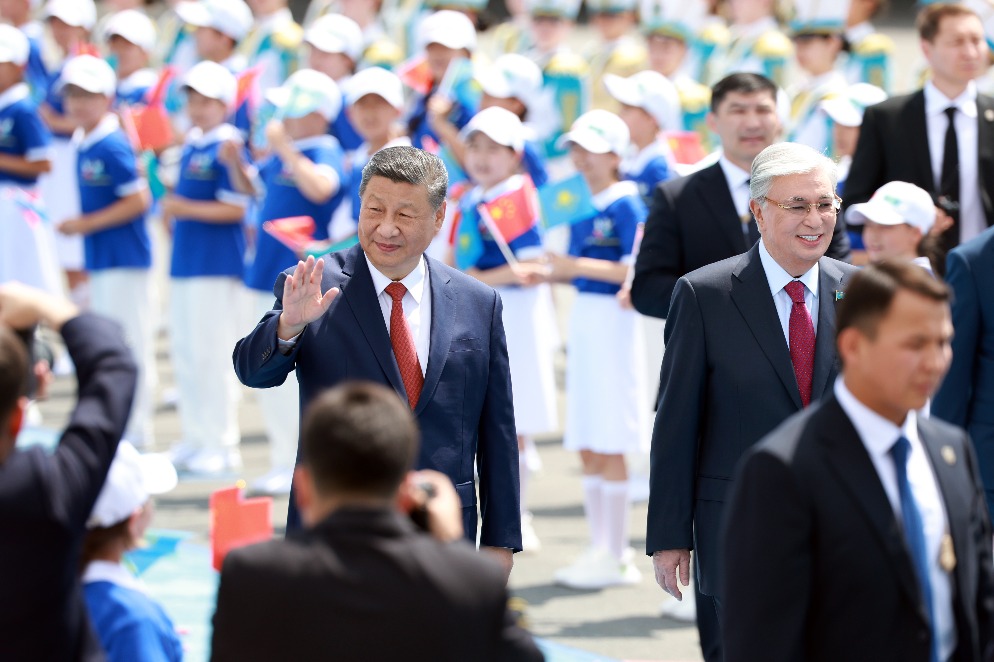Bring down the cultural barriers

Foreign investors should add more Chinese elements for box-office success
Filmmaking is a modern communication technique that is reliant on a host of factors such as capital, competition and collaboration. While it is evident that foreign investment does boost filmmaking, its actual impact is difficult to gauge.
China's film market comprises more than 6,000 screens and had box-office receipts of over 10 billion yuan ($1.57 billion, 1.13 billion euros) in 2010. The sheer size of the market and the fact that appetite for foreign capital is growing steadily make China an irresistible magnet for foreign investors and movie companies.
But there are still several issues that need to be tackled, as was evident during an industry forum at the 14th Shanghai International Film Festival earlier this year.
Some of the issues that remained unanswered included questions like: Is the current content mix suitable for generating adequate profits under the screens and revenue sharing model? Yet another question that arose was to what extent capital and cinema should influence the film story.
All worries have reasons. With more and more investors keen on cinema investment, there is no doubt that confidence in the industry is growing. Evidence of this is visible in the growing number of films that vie for box-office collections in cinemas every year.
Though the growth has been explosive, only 130 of the 465 films produced in China during 2009 managed to have a screen presence.
As for the production market, it is clear that there is still a low concentration. China Film Group Corp and Huayi Brothers, the top two producers, had just 10 and 9 percent market share in 2009. The top four film producers in China accounted for just 26 percent of the total box office, less than that of the three US producers in China, who accounted for over 27 percent. Such trends clearly indicate the direction in which foreign investment should go.
The story behind the scenes is well explained by Greg Frazier, the executive vice-president of the Motion Picture Association of America, who terms China as a "big and exciting market" and says "American movie companies are already making films that Chinese audiences want to see". Frazier is right. The box office for US movies in China more than doubled in 2009 and has continued to grow.
The Hollywood movie 2012 was among the top three blockbusters of 2009 in China with takings of over 420 million yuan. There were a lot of China elements in 2012 that were incorporated deliberately to cater for Chinese audiences, thereby reinforcing the adage, "making movies is to make money".
It is for these very same reasons that we see more foreign investors entering the Chinese film production market.
Current trends indicate that co-production of films is a better investment option for foreign investors as it helps them get direct access to the domestic market. But there is also often the gray area of how to tackle cultural differences in such ventures.
Co-producers should always reach a consensus about the broad idea and the actual story before they begin the production process. There are not too many examples of successful co-productions as it is difficult for a co-produced work to merge cultural gaps and gain recognition both at home and abroad.
Columbia Pictures' The Karate Kid was a good try. "It had tremendous heart, humor and depth," says Rory Bruer, president of worldwide distribution at the Sony Corp unit. He says the film's underdog plotline and exotic locales, most in China, worked in its favor.
The film industry in China welcomes foreign investment, especially in the co-production market, as it benefits all the industry players. Apart from expanding and activating the capital market, it also generates ideas and experiences about stories, production techniques and business expertise.
Cooperation provides the best chance to learn and it is always good to be working and learning from the best. As for Chinese culture, there should be no undue haste to promote it. The more China elements are involved, the better will China be depicted.
The author is a professor at Communication University of China.
Today's Top News
- Retail sales surge points to strong resilience
- Xi, Tokayev attend ceremony of exchanging cooperation documents
- DPP's restrictions sellout of island's interests
- Astana Summit forges strong bulwark against increasing global turbulence
- Xi meets Kazakh President Kassym-Jomart Tokayev
- Xi arrives in Astana for China-Central Asia Summit






























